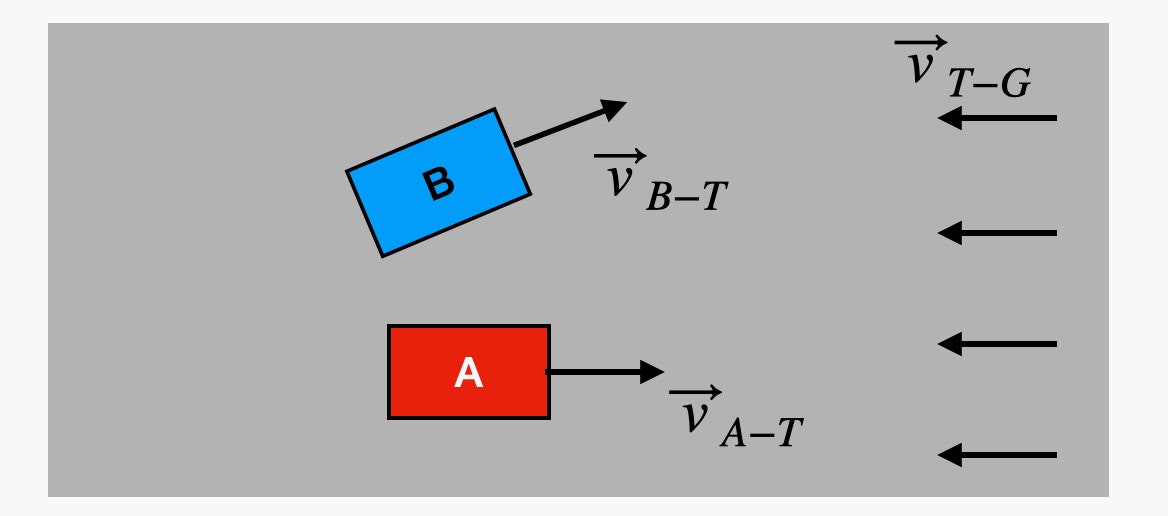If the force on the left wheel is greater than the right, this will produce a net torque that will rotate the car to the right. However, for some turning cars this isn’t a problem. Let’s say a car turned to the left and is moving down the track in a diagonal path (not straight down). Now there will be a sideways force on the wheels. This will push a wheel on one side of the car into the axle and pull the other wheel away from the axle. It’s possible that this pushing and pulling of wheels can change the effective coefficient of kinetic friction such that the differential friction forces cause it to turn the other way and head directly back down the incline. These are the lucky cars that are more likely to win.
What About the Wall?
Let’s say a car turns left and moves to the left side of the treadmill until it comes in contact with the side wall. It can’t keep moving to the left since there’s a barrier there. If it hits at a shallow angle, the wall can exert a sideways force to turn it back “downhill.” However, if it keeps pushing against the sidewall, there will be a friction force between the side of the car and the wall. This frictional force will push up the incline and decrease the net force down the incline. If this wall frictional force is just the right amount, the net force will be zero and the car won’t accelerate. It will just stay in the same position.
Does the Speed of the Treadmill Even Matter?
In the analysis above, none of the forces depend on the speed of the treadmill. And if a car is moving straight down the track, then the treadmill speed doesn’t matter. But what about a car moving down at an angle? Clearly, in a real-life race with cars that can move in any direction, the track speed does matter. OK, so just assume we have two cars with the same speed (v) moving on a track. What happens when a car turns?
Illustration: Rhett Allain
What are those labels on the velocities? It turns out that velocities are relative to our frame of reference. The two cars have velocities relative to the track. So, A-T is the velocity of car A with respect to the track. What about the velocity of the track? That is measured with respect to the reference frame of the ground (T-G). But what we want is the velocity of the cars with respect to the ground. For that, we can use the following velocity transformation. (Here is a more detailed explanation.)



